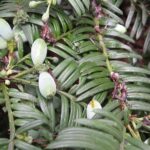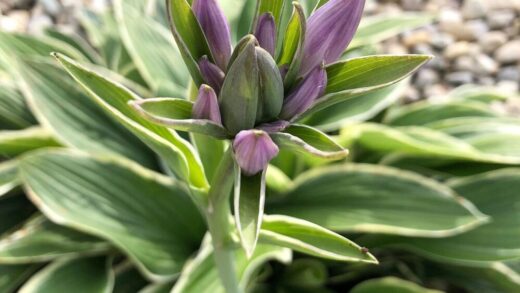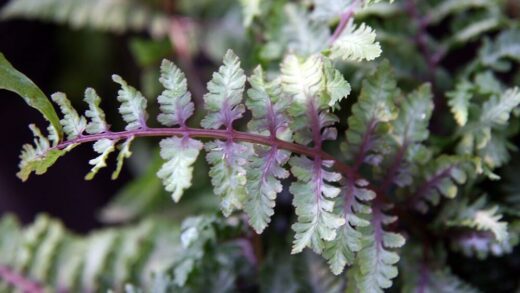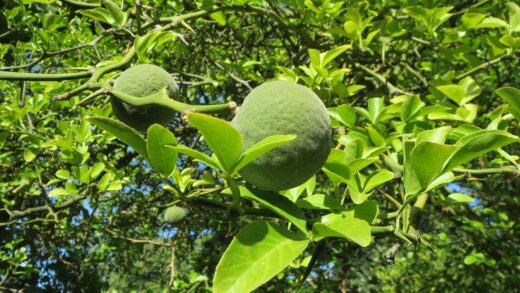Sea thrift is a remarkably hardy evergreen perennial, well-equipped to handle the challenges of winter in many different climates. Its natural resilience, honed in exposed coastal and alpine environments, means that in most temperate regions, it requires very little special care to survive the colder months. The dense, tufted foliage typically remains evergreen or semi-evergreen throughout the winter, providing valuable texture and a touch of green to the dormant garden landscape. The primary key to successful wintering is not about providing warmth or insulation, but about protecting the plant from the combination of cold and wet conditions, which can be fatal to its sensitive crown.
The most critical factor for the winter survival of sea thrift is excellent soil drainage. During the winter, soils can become saturated from rain, snow, and ice, and if this moisture does not drain away quickly, it can lead to devastating crown and root rot. A plant that is happy in well-drained soil during the summer can easily succumb during a wet winter if the drainage is even slightly inadequate. This is why site preparation is so paramount; ensuring the plant is in a sandy, gravelly, or raised location is the best insurance policy against winter loss.
In terms of cold hardiness, sea thrift is typically rated for USDA zones 4 through 8, meaning it can withstand significant freezing temperatures without protection. The evergreen foliage is tough and adapted to cold, often taking on bronze or purplish tints in the winter, which adds to its seasonal interest. In most cases, there is no need to apply a heavy winter mulch, as this can do more harm than good by trapping excess moisture around the base of the plant.
The plant’s low, mounding habit also helps it survive the winter. This compact form is less susceptible to damage from winter winds and can be naturally insulated by a layer of snow. Snow cover is actually beneficial, as it provides a consistent layer of insulation against fluctuating temperatures and protects the foliage from desiccating winter winds. The main challenges arise not from the cold itself, but from freeze-thaw cycles and persistently wet soil.
Preparing for the cold season
Preparation for winter begins in the late summer and autumn. During this period, it is important to cease any fertilization you might be providing. Applying fertilizer late in the season can encourage a flush of soft, new growth that will not have sufficient time to harden off before the first frosts arrive. This tender new growth is highly susceptible to frost damage and can create entry points for disease, so allowing the plant to naturally slow down its growth is crucial for its winter readiness.
More articles on this topic
As autumn progresses, you can continue to deadhead any remaining spent flower stalks to keep the plant tidy, but avoid any significant pruning or cutting back of the foliage. The evergreen mound of leaves serves as the plant’s own natural winter protection, insulating the crown from the cold. A final cleanup of the area around the plant is beneficial. Rake away fallen leaves and other debris from nearby deciduous trees, as a thick mat of wet leaves can smother the plant and trap moisture, leading to rot.
Ensure the area around the sea thrift remains well-drained. If your garden is prone to collecting water in certain spots during heavy autumn rains, take steps to improve the drainage before winter sets in. This might involve creating small channels to divert water or gently mounding the soil around the plant to lift its crown slightly higher. For plants in containers, this is the time to ensure the drainage holes are clear and to consider moving the pots to a more sheltered location.
Finally, a healthy, well-established plant will always overwinter more successfully than one that is stressed or newly planted. The best preparation for winter is a full season of proper care. A plant that has enjoyed a summer in full sun and well-drained soil will have developed a strong root system and stored enough energy to endure the rigors of the dormant season. Last-minute interventions are less effective than consistent, good cultural practices throughout the growing year.
The role of mulch and snow cover
When it comes to winter mulching for sea thrift, a cautious approach is necessary. While mulch is often recommended to protect perennials, for this particular plant, traditional organic mulches like shredded leaves, straw, or wood chips can be detrimental. These materials tend to hold moisture and, when piled against the plant’s crown, they create a damp, stagnant environment that is the perfect breeding ground for fungal rot. Therefore, a heavy winter mulch should be avoided.
More articles on this topic
If you are gardening in a very cold climate at the edge of its hardiness range (e.g., USDA Zone 4) and are concerned about extreme cold without reliable snow cover, a different type of mulch can be used. A layer of loose, airy material like pine boughs or a very light application of gravel or crushed stone around the base can offer some protection without trapping excess moisture. The goal is to insulate the roots from deep freezes while still allowing the crown to breathe and stay relatively dry.
Natural snow cover is the ideal form of winter protection for sea thrift. A blanket of snow acts as an excellent insulator, keeping the soil temperature stable and protecting the plant from the damaging effects of freeze-thaw cycles. It also shields the evergreen foliage from the harsh, drying winter winds, which can cause dehydration and “winter burn.” If you have reliable snow cover throughout the winter, your sea thrift is in an ideal situation and requires no additional protection.
In the absence of snow, the evergreen foliage is exposed to the full force of winter sun and wind, which can cause desiccation. This is a particular risk in climates that experience frozen ground and bright, sunny winter days. The frozen ground prevents the roots from taking up water, while the sun and wind cause the leaves to lose moisture. While a healthy plant can usually withstand this, providing a temporary windbreak for very exposed plants might be considered in the harshest of winter climates.
Overwintering in containers
Overwintering sea thrift in containers presents a different set of challenges compared to garden-grown plants. The roots in a container are much more exposed to the cold, as they are not insulated by the large thermal mass of the earth. In regions where the ground freezes solid, the soil in a pot can freeze completely, which can be damaging or fatal to the plant’s root system. Therefore, some form of protection is usually required for containerized plants in cold climates.
One of the simplest methods is to move the container to a more sheltered location. Placing the pot against a north or east-facing wall of a house can protect it from the harshest winter sun and wind. Grouping several containers together can also help them insulate one another, reducing the temperature fluctuations within each pot. The goal is to keep the roots cold and dormant, but to prevent them from freezing and thawing repeatedly.
For additional protection in very cold climates, the pot itself can be insulated. You can wrap the container in bubble wrap or burlap, or you can place the entire pot inside a larger container and fill the gap with insulating material like straw or leaves. Another effective technique is to “heel in” the pot by sinking it into an empty spot in a garden bed, so that the surrounding soil provides natural insulation for the roots.
Watering is a critical consideration for overwintering containers. The soil should be kept on the dry side, as wet, frozen soil is much more damaging to the roots. Ensure the container has excellent drainage and is not sitting in a location where it will become waterlogged by winter rain or snowmelt. An unheated garage, shed, or cold frame that stays cold but above extreme freezing temperatures can also be an ideal place to store containerized sea thrift for the winter.

















